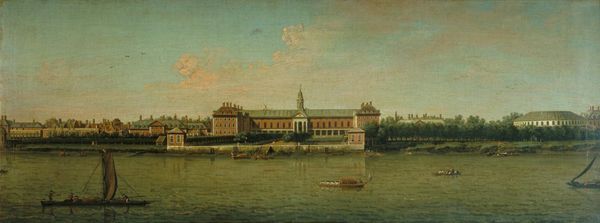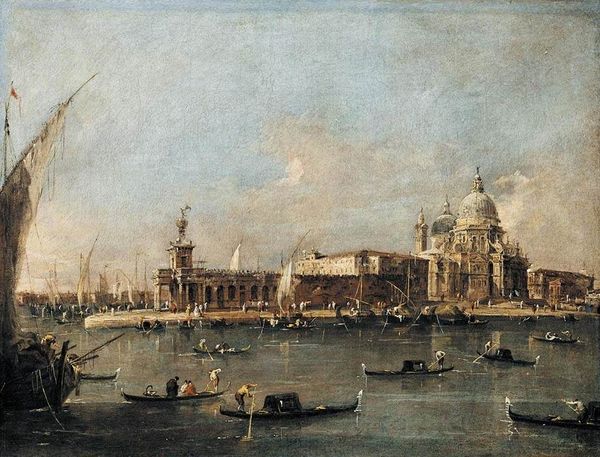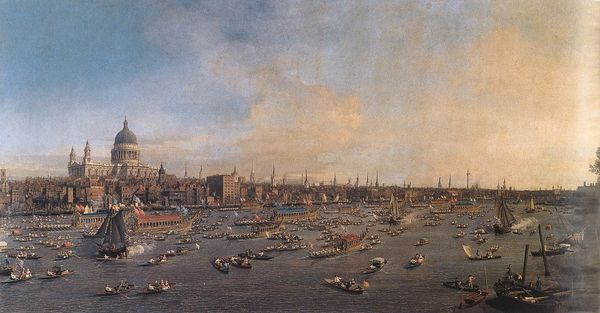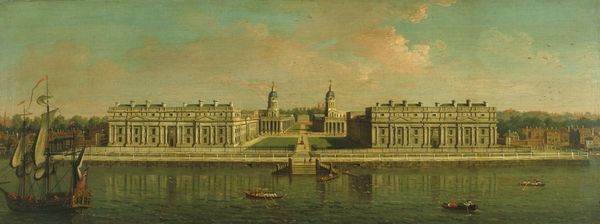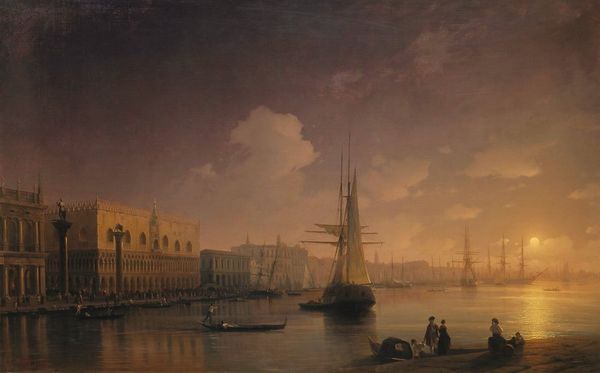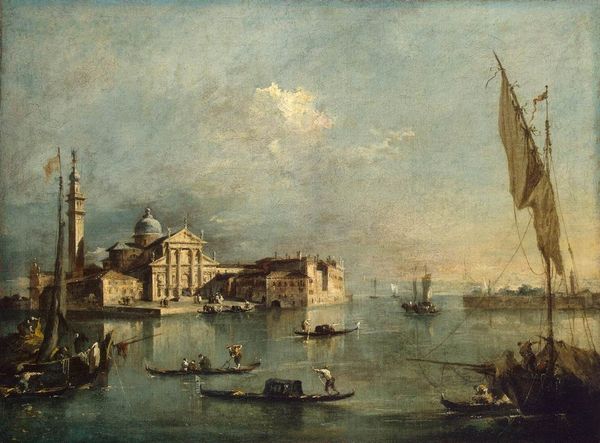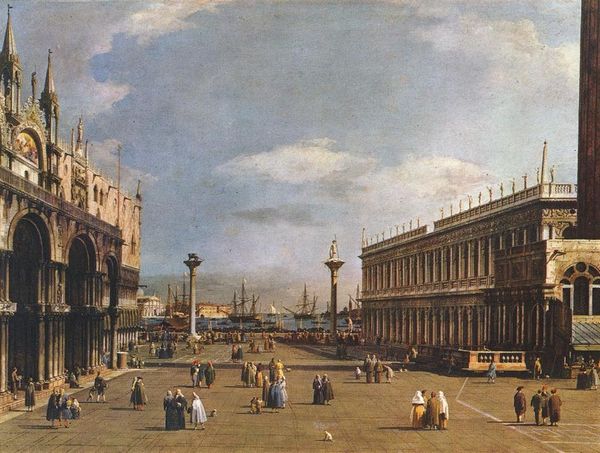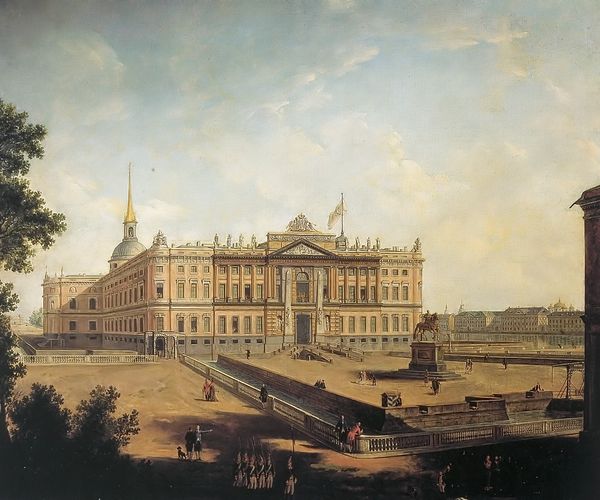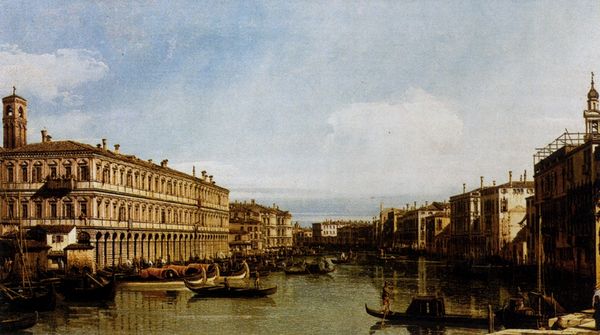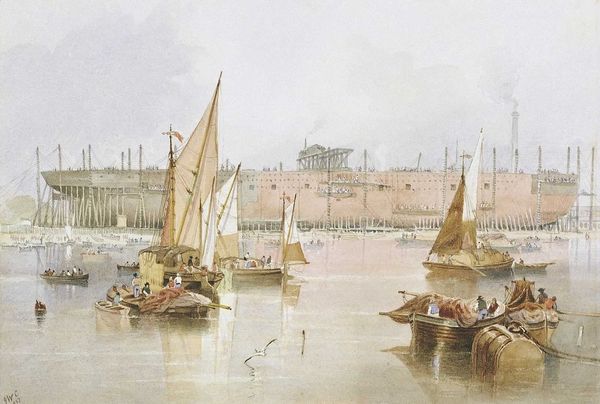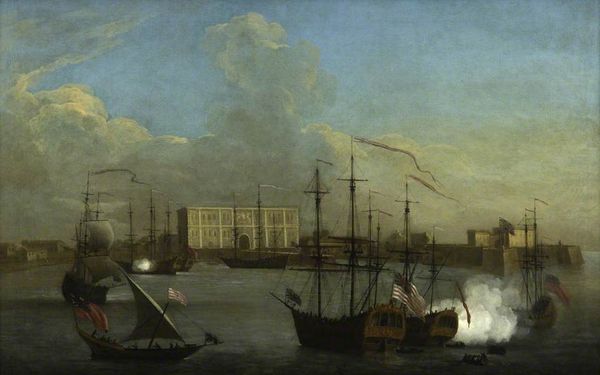
London: Greenwich Hospital from the North Bank of the Thames 1753
0:00
0:00
canaletto
National Maritime Museum, London, UK
painting, oil-paint
#
boat
#
baroque
#
painting
#
oil-paint
#
landscape
#
perspective
#
oil painting
#
cityscape
Dimensions: 30.3 x 43.8 cm
Copyright: Public domain
Curator: What strikes me immediately about Canaletto’s "London: Greenwich Hospital from the North Bank of the Thames", painted in 1753 using oil on canvas, is its sheer technical mastery. The textures and the precision with which he renders the architecture... breathtaking. Editor: Absolutely, the precision is striking. But I can’t help but see this composition as a deliberate assertion of power. Look how Greenwich Hospital dominates the scene, a symbol of maritime strength and, frankly, imperial reach reflected in the activities on the Thames River in front of it. Curator: It’s hard to ignore the boats; their placement implies a bustling network, and consider their construction – the raw materials sourced, the skilled labor required to assemble them, even the hierarchy of their usage for cargo, passengers or naval affairs! All integral to understanding the socio-economic picture of 18th century London. Editor: Right, and within that bustling network are individuals, their presence reduced to mere strokes of paint, hinting at their labor and participation in the construction of British power. These workers, from various backgrounds and classes, facilitated the building and maintenance of England’s naval infrastructure. The work on display on and near the river made England an imposing global power, but it also demanded a huge amount of hard labor. Curator: Precisely. Even the perspective serves a purpose. Canaletto positions us on the north bank, giving prominence to Greenwich and emphasizing its imposing scale, reflecting perhaps the institution’s own self-importance. The labour that went into the transport of the paintings is another material consideration. Consider Canaletto’s own market value at the time, the patron who likely commissioned it, the purpose it served decorating an elite home versus the actual lived conditions of people on the boats? Editor: The level of detail reinforces a very specific narrative – one where British grandeur and order are paramount, perhaps obscuring other, less flattering truths about wealth disparity and colonial ambitions intertwined with naval power at this moment in history. Curator: Indeed. But this tension, between artistry and the social forces it portrays, gives the work its complexity and makes its production a fascinating object to investigate from a materials perspective! Editor: Agreed. It's a reminder that even seemingly idyllic scenes often have a darker undercurrent, reflecting the complex power structures that shaped their creation. It reminds us to look critically, beyond just aesthetic beauty.
Comments
No comments
Be the first to comment and join the conversation on the ultimate creative platform.
